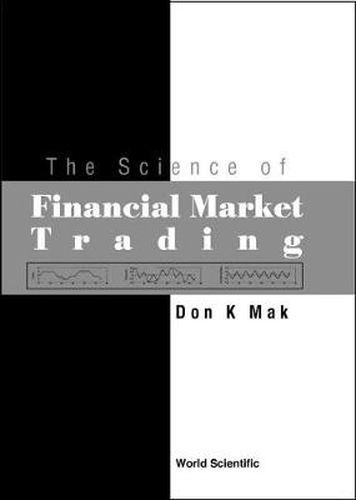Readings Newsletter
Become a Readings Member to make your shopping experience even easier.
Sign in or sign up for free!
You’re not far away from qualifying for FREE standard shipping within Australia
You’ve qualified for FREE standard shipping within Australia
The cart is loading…






In this title, Dr Mak views the financial market from a scientific perspective. The book attempts to provide a realistic description of what the market is, and how future research should be developed. The market is a complex phenomenon, and can be forecasted only with errors - if that particular market can be forecasted at all. The book reviews the scientific literatures on the financial market and describes mathematical procedures which demonstrate that some markets are non-random. How the markets are modelled - phenomenologically and from first principle - is explained. It discusses indicators, which are quite objective, rather than price patterns, which are rather subjective. Similarities between indicators in market trading and operators in mathematics are noted, and particularly, between oscillator indicators and derivatives in calculus. It illustrates why some indicators, e.g., stochastics, have limited usage. Several new indicators are designed and tested on theoretical waveforms to check their validity and applicability. The indicators have a minimal time lag, which is significant for trading purposes. Common market behaviours like divergences between price and momentum are explained. A skipped convolution technique is introduced to allow traders to pick up market movements at an earlier time. The market is treated as a nonlinear phenomenon. Forecasting of when the market is going to turn is emphasized.
$9.00 standard shipping within Australia
FREE standard shipping within Australia for orders over $100.00
Express & International shipping calculated at checkout
In this title, Dr Mak views the financial market from a scientific perspective. The book attempts to provide a realistic description of what the market is, and how future research should be developed. The market is a complex phenomenon, and can be forecasted only with errors - if that particular market can be forecasted at all. The book reviews the scientific literatures on the financial market and describes mathematical procedures which demonstrate that some markets are non-random. How the markets are modelled - phenomenologically and from first principle - is explained. It discusses indicators, which are quite objective, rather than price patterns, which are rather subjective. Similarities between indicators in market trading and operators in mathematics are noted, and particularly, between oscillator indicators and derivatives in calculus. It illustrates why some indicators, e.g., stochastics, have limited usage. Several new indicators are designed and tested on theoretical waveforms to check their validity and applicability. The indicators have a minimal time lag, which is significant for trading purposes. Common market behaviours like divergences between price and momentum are explained. A skipped convolution technique is introduced to allow traders to pick up market movements at an earlier time. The market is treated as a nonlinear phenomenon. Forecasting of when the market is going to turn is emphasized.